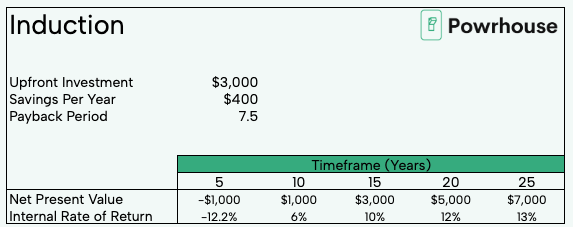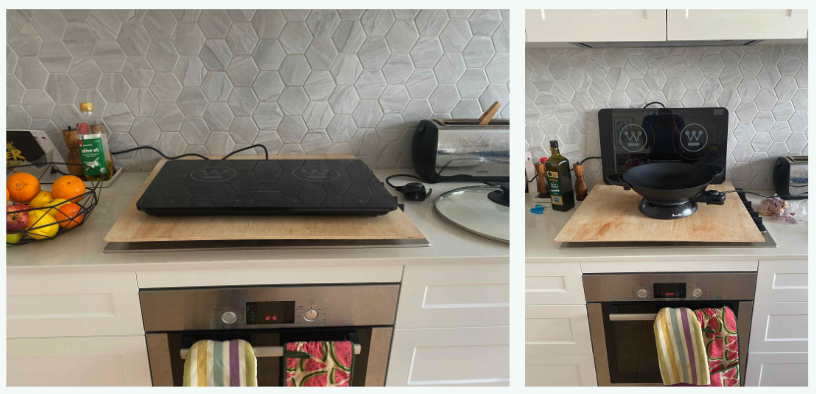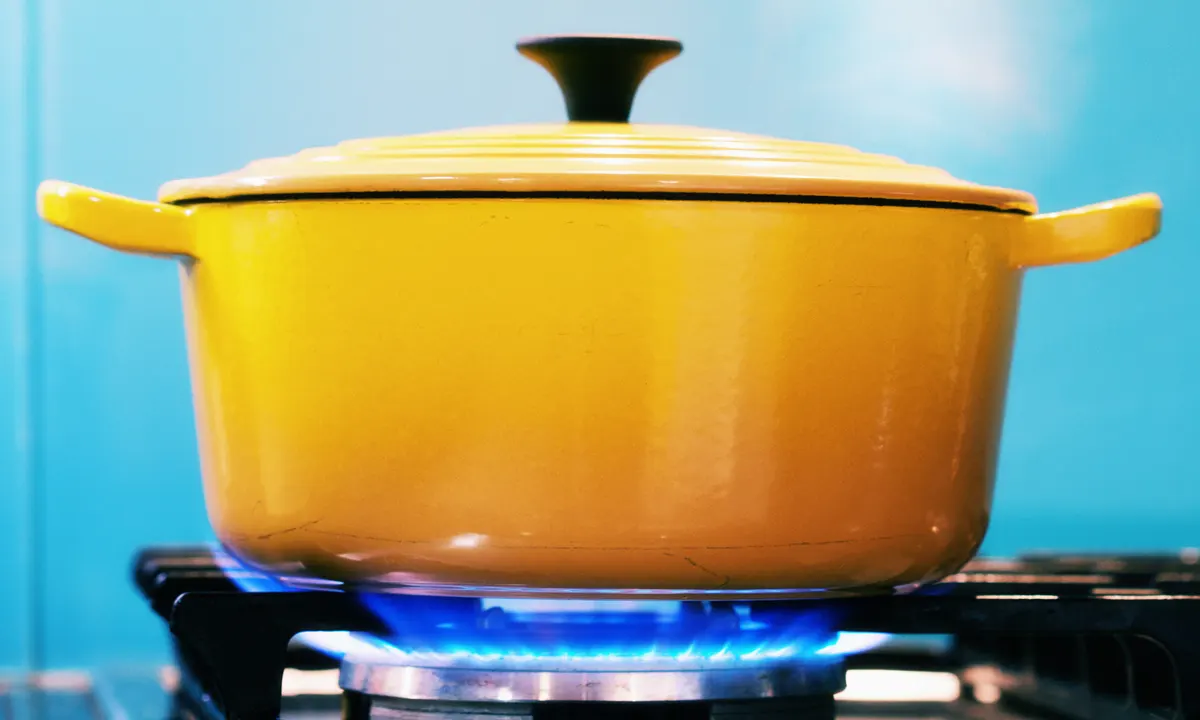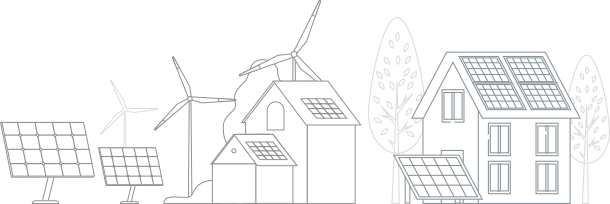It is estimated that 40% to nearly 50% of half of Australians use a gas cooktop. Gas cooktops have served their purpose and were a much cleaner and more effective replacement to the old wood or coal fired cooktop.
Nowadays, there are growing concerns about the health impacts of using gas cooking in households. It had never really occurred to us, but when you think about it, the use of a naked flame in the household is a little bonkers.
Some of information we’ve found includes:
- Gas stove use is estimated to cause 12% of childhood asthma in Australia (Source, Source)
- Cooking with gas is like living with a smoker. And these days, no one smokes indoors, especially around children
- Turning on a range hood helps a little, but not that much. The average rangehood sucks out around 30% of the combustible product. Range hoods that are effective are too loud (Source)
- Opening windows and doors helps, but is not always practical (eg: if it’s cold outside)
- Gas cooktops can leak even when not in use (Source)
The Quick Take
- Induction cooking is fantastic – countless people swear they never would cook with anything other than gas, try induction, love it and never go back
- There are two options for switching: an inset induction cooktop and a portable induction cooktop
- The financial calculations for switching from gas to an inset induction cooktop only makes sense if it’s the last gas appliance
- A portable induction is a wonderful short-term option
- The health impacts of cooking with gas are a big concern
Given my wife has asthma, my mother-in-law has asthma and we have two children under the age of five, we switched to induction cooking as quickly as we could.
Inset Induction
Unfortunately switching from an existing gas cooktop to an induction cooktop inset into a kitchen bench is not an easy task. It usually requires a plumber to disconnect the existing cooktop ($), a new induction cooktop ($$) and then an electrician to hardwire a dedicated circuit to the switchboard ($). In our case, we have a 750mm gas cooktop (standard is either 600mm or 900mm), so we’d also need a stonemason to cut a bigger template for the new cooktop. All of these trades cost money and take time.
Inset induction cooktops start as low as $1,000 and can be as much as $6,000. 600mm cooktops are cheaper than 900mm cooktops. We suggest allowing an additional $1,500 for the plumber and electrician.
It’s estimated that gas cooktops burn only around $100 year in gas and induction cooktops are twice as efficient. The switch to induction cooktops does not make financial sense. However, if your gas cooktop is your last remaining gas appliance, disconnecting it will save you the gas service fee (around $350 per year), so total savings of around $400 per year (adding the $50 in running costs).

Portable Induction Cooktop
We resigned ourselves to using our current gas cooktop until we heard a really simple, clever solution: a portable induction cooktop that plugs into a standard electricity outlet.
It’s rare that we, and most people at home, need to use all 4 or 5 burners at the same time. At most we perhaps use three. A portable twin induction cooktop will often suffice: one burner for the pasta, one for the pasta sauce.
We found some plywood lying around the garage and converted the gas burner to become the base of our new induction burner. This both saves bench space and lines up the induction cooking with the rangehood. We bought an electric wok to replace the old gas work (which needed replacing anyway).

We bought this model from Appliances Online for $229. A single version is also available for $119.
Almost 12 months later and there has only been one occassion where I thought of using a third burner (simmering rice, steaming veggies, I was going to cook the fish in the frying pan but wrapped it up in foil and into the oven instead). I really like the switch and I feel a great deal happier about cleaner indoor air quality for me and my family.
In preparation for this article, I asked my wife for her honest appraisal. She said it’s not perfect, but it works. One grievance is she finds it hard to set the perfect temperature for simmering rice. One setting is a little low, the next setting is a little too high. It’s a small price to pay.
Cookware
Another concern about induction cooking is “we’ll need to replace all our cooking equipment?” This is unlikely.
The easy way to tell is to hold a magnet to your saucepan. If it sticks, it’s fine. If not, it won’t work.
We went through our cookware and out of maybe 10 pieces of cooking equipment, 2 are not magnetic and don’t work. Importantly, if they are not compatible, it’s not like they’ll spontaneously combust. They just simply don’t work, so there’s no harm in trying. We haven’t had to buy any new cookware. Some Powrhouse clients report losing half their cookware, which isn’t ideal, but is arguably a small price for clean air.
Conclusion
Gas does not belong in the home – nothing moreso than a naked flame on a gas cooktop.
Induction cooking is easy to use, super easy to clean and the good news is portable cooktops are suitable temporary options until a more permanent inset cooktop is within budget.
More Information On Gas Cooking Health Concerns
For more information on the studies, please visit:
Australian Journal of General Practice
A brief excerpt of the later is here:
The two most important gas-related health impacts are the respiratory effects of nitrogen dioxide (NO2) and the toxicity due to acute or chronic exposure to carbon monoxide (CO).
In the flame of a gas stove, the gas methane combines with oxygen from air to produce both heat and light. Some of the nitrogen from the air is oxidised in the flame, producing several nitrogen oxides such as NO2, nitric oxide (NO) and nitrous oxide (N2O), sometimes collectively referred to as NOx. NO2 is a respiratory irritant, while NO is harmless to humans. Gas flames also release formaldehyde (CH2O), CO and fine particle air pollutants. In addition, any high-temperature cooking process – such as frying or using a wok – will also release fine particles regardless of the heat source.
The current suggestion to ‘electrify everything’ on climate grounds will have substantial health benefits if it leads to the reduction in gas use in people’s homes. As 2.7 million Australians have asthma, even a small reduction in incidence or severity will be of great value


 Subscribe to Our
Subscribe to Our